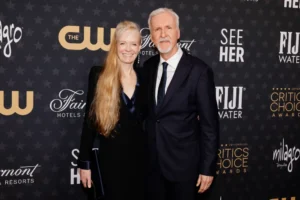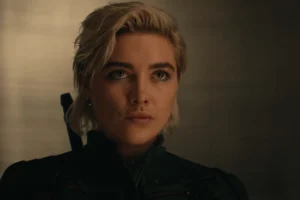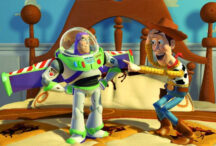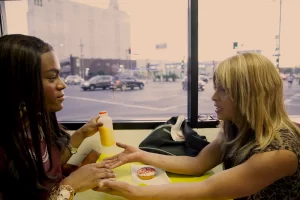by: CHARLES MATTHAU
The director Robert Rodriguez is famous for getting his shooting done rather quickly. He has described his process as one long day of work, beginning with shots and moving into editing all within the same day. He likes to be able to review his work as it’s produced so that he knows what the final product might look like. Compare that to someone like George Lucas, who spends quite a bit of time and budget in post-production, and it’s easy to see that technology has taken film in very different directions.
Technology’s greatest impact is perhaps felt in new cameras that allow cinematographers to shoot in a higher definition, letting viewers take in more of the amazing work in set design. Technology also drives entire segments of film now, enabling movies that were not possible before. Here are some examples where technology has driven film making.
Costs
Film is the preferred medium of old school film makers, but it’s usually too costly for a studio to authorize. Film carries several disadvantages, that dwarf the authenticity that the film maker is going for. Aside from the expense, film is impossible to reuse. That means a day of shooting must have footage the crew can use, or else every resource consumed that day was a waste. The costs of film don’t end the day of shooting either. Cinematographers who use film must develop it, and then there is the costly process of editing the film.
Going digital largely means foregoing the large canisters of film that used to be synonymous with film making. It also means production companies complete their shoot schedules with less waste, keeping the entire project under or close to budget.
Editing
Post production is another area where digital trumps the usage of film. Adding visual effects to film was often a precise art, where the effect had to blend seamlessly with what was being shot. This was a painstaking process that editors no longer go through. Digital effects are created and added to the shot within the same program or family of programs. This software also allows editors to work on entire sections of a film, easily piecing scenes together after the post production effects are added in. That includes audio, which now has a high definition digital file that ensures the audience will hear every word and action that they see.
The end result is a piece of film that looks cleaner, with effects that blend seamlessly with the movie. The audience usually can’t tell when CGI has been used, but it’s a powerful tool film makers have increasingly used to set atmosphere.
Shooting
Shooting in digital is much easier because you can do more in less time. Multiple cameras can run on the same shot, so you always get the angle you want without having to waste time on retakes. I like shooting digitally because it makes it easy to shoot multiple takes, and to get multiple angles more economically. A director’s bread and butter is pace and performance. I love being able to shoot everything. Even, with the actors’ permission, the rehearsals. You never know what pieces you’ll be able to use later in editing.
Coupled with the new steady cam equipment that film has taken a liking to, the end result is a more intimate shot. The audience feels present in the moment because the lens we are allowed to look through feels authentic. Film makers also spend less time re-shooting the same scene to get the right angle.
Distribution
The process of distributing film in digital has not quite hit the apex of what it is capable of, but the indie film maker especially stands to gain. Distribution through YouTube has been the most common form of marketing for quite some time. Studios have released big-budget trailers, while indie film makers have sought funding and interested eyes posting content through various YouTube channels. Of course, the adverse affect is that quality has significantly declined, but that’s more a function of volume. YouTube users also crowd source what is popular with a thumbs up, helping others to find new and interesting content without spending too much time digging for it.
Rights to films are already distributed to consumers digitally, but this market has not been fully tapped. There is much debate as to the future of film consumption, but companies seem willing to distribute films online. The 2011 film Tower Heist with Ben Stiller was almost released to Comcast customers alongside the theatrical release, but the idea was scrapped after several theaters threatened not to show the film in protest. Although digital promises an exciting new world of distribution, the business of film has yet to catch up with this idea.
Preservation
The preservation of film isn’t something we think about as consumers, but it’s the very reason we still have re-mastered copies of Ben Hurr and the Star Wars trilogy. Film will crumble and damage over time, and it’s extremely flammable too. There are simply too many methods for film to outlive its usefulness. Digital films can be stored on company servers, without taking up too much space. The costs to maintain this infrastructure are also lower than the costs to store and re-master film.
Digital archives are also easy to backup and restore. Pixar had a now famous incident when creating Toy Story 2, where one of the animators lost almost the entire film working on it at home thanks to a bad backup. Aside from this small gaffe, the backup system has allowed production companies access to earlier versions of a film, as well as a source to store shots used for dailies and extras.
Without technology, it would be nearly impossible for Hollywood to produce the volume of films that it does. Film might be a nice thought for that vintage feel, but the practicalities of digital have largely put the film versus digital debate to rest.
Charles Matthau, son of Walter Matthau, is a film and television director best known for adapting books into movies.
















+ There are no comments
Add yours